#New York New Haven & Hartford Railroad
Note
Vent to me about trains if ya like :3
YAY :D
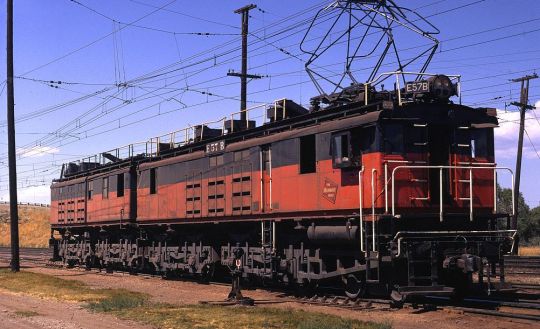
So the Milwaukee Road was the First Railroad to use the use 3000 Volt DC power for any significant stretches of Electrification in 1915 (it was adopted by South African Railways in 1925, Cleveland Union Terminal (under the New York Central Railroad), the Soviet Union in 1930, the Delaware Lackawanna and Western Railroad in 1930, Italy in 1933, Brazil in 1935, Spain and Chile in 1945)
however the Primary mainline Electrification system United States would be 11,000 Volts 25 Hertz AC which was Adopted by the New York New Haven and Hartford Railroad in 1907 between Pelham and Stamford in New York (later all the way between Manhattan and New Haven CT), the Pennsylvania in 1915 between Philadelphia and Paoli (later the Entire PRR mainline between Washington DC and New York as well the entire Philadelphia Suburban Network), the Great Northern railroad in 1922 between Wenatchee and Skykomish (de-electrified in 1956), the Virginian Railroad in 1925 between Mullens and Roanoke (de-electrified in 1962), the Reading Railroad in 1928 for their Half of the Philadelphia Suburban Network, and very Briefly the Norfolk and Western had Electrified the Elkhorn grade with this system but de-electrified in 1940
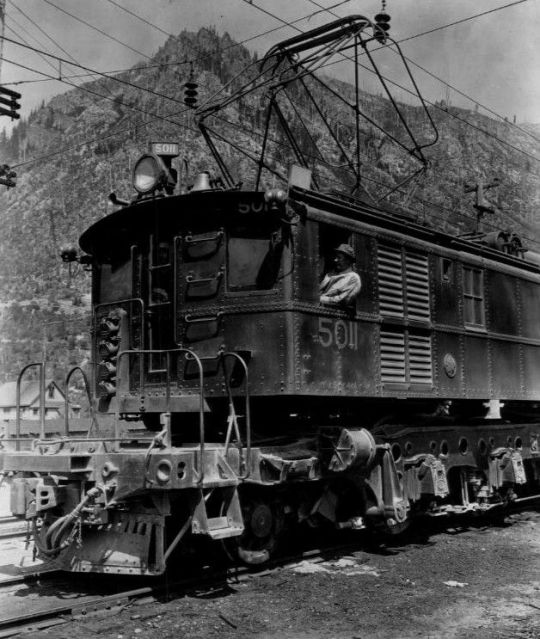

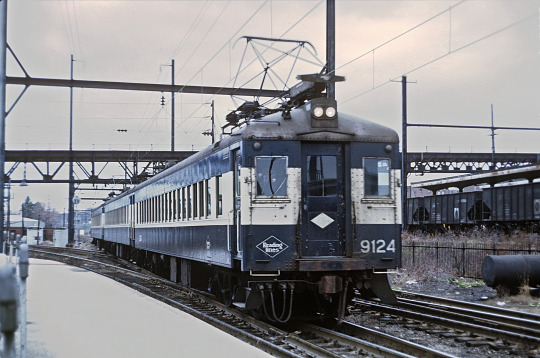

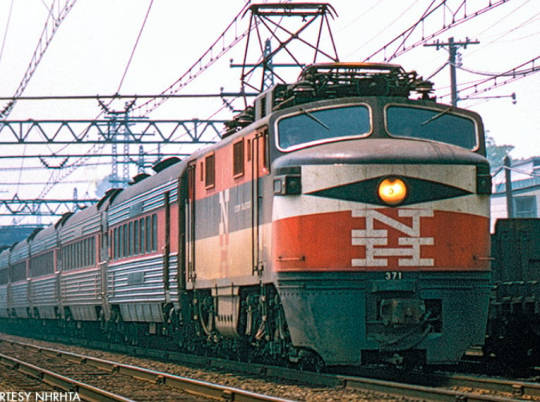
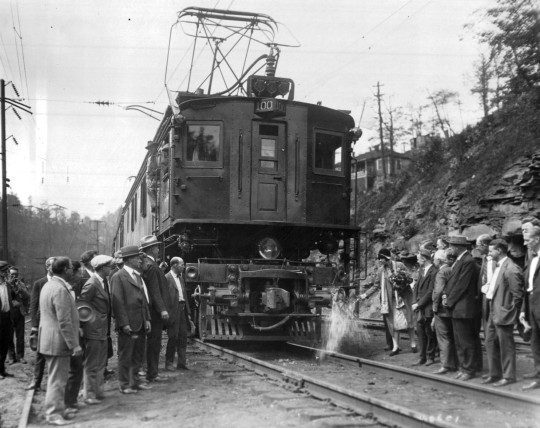
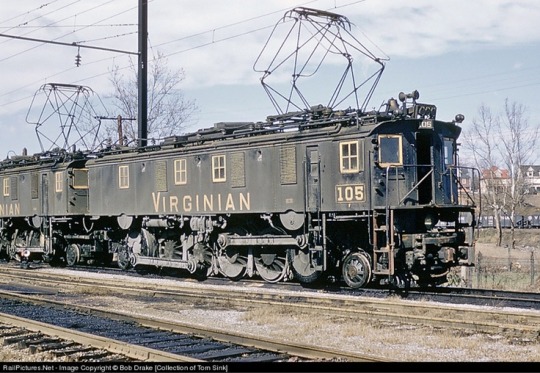
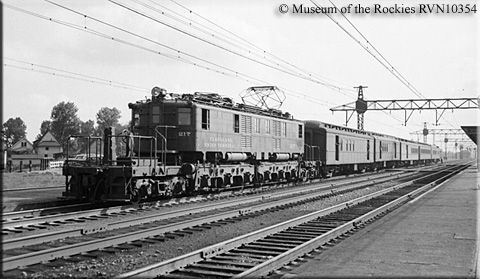
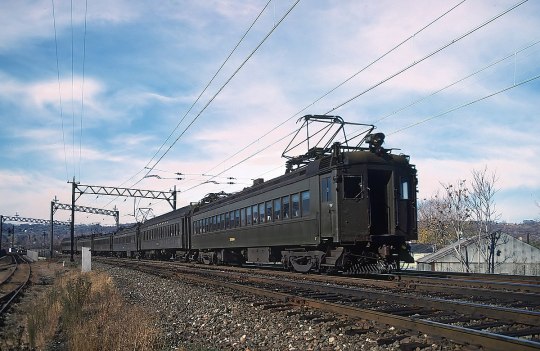
@amtrak-official
#trainposting#amtrak#electric traction#pennsylvania railroad#new york central#new york new haven and Hartford Railroad#new haven#penn Central#conrail#reading railroad#reading and Northern#Virginian Railroad#electrification#electrified railroads#great northern#septa regional rail#philadelphia#northeast corridor#Delaware Lackawanna and Western#Erie Lackawanna#Cleveland Union Terminal
15 notes
·
View notes
Photo
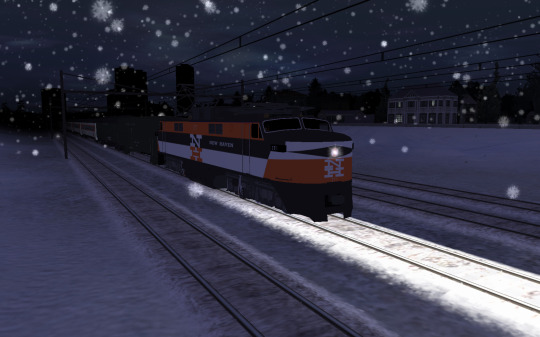
Day 24: New Haven EP-5
Info from Wikipedia
The New Haven EP-5 was a double-ended mercury arc rectifier electric locomotive built in 1955 by General Electric, for the New York, New Haven and Hartford Railroad. It was built to haul passenger trains between Grand Central Terminal or Penn Station in New York City and New Haven, Connecticut. The EP-5s resembled the Alco FA.
The EP-5s were the first AC passenger electric locomotives to use rectifiers to convert alternating current from overhead wires to direct current for the traction motors. They also collected DC from the third rail used by the New York Central, whose tracks the New Haven used to reach Grand Central Terminal.
All of the class were equipped with the Pennsylvania Railroad's cab signal system needed to operate into Penn Station; Washington, D.C.-Boston through trains over the Hell Gate Bridge, plus the Montrealer/Washingtonian, were their main assignment throughout their New Haven careers.
The units were known as "Jets" due to the roaring sound made by their main blowers; an example of this characteristic was inadvertently preserved for posterity in a scene shot at Grand Central Terminal, the very first moments of the movie The Man in the Gray Flannel Suit.
The EP-5s had a reputation for rapid acceleration and high pulling capacity. However, the class also had a tendency to overheat and catch fire due to the crowded, poorly ventilated internal component arrangement, a situation made necessary by the need for the units to conform to the weight restrictions imposed by the New York Central's Park Avenue steel viaduct. This problem was significantly aggravated by the New Haven management's de-emphasis of electric operations in favor of its new dual-power FL9 diesels, and the railroad's financial condition. By 1962, a year after the New Haven entered bankruptcy, only three units were in service. All 10 were quickly rebuilt under the trustees' management, but by the time of the New Haven's 1969 inclusion in Penn Central, four were again out of service (and were soon scrapped). The EP-5s were rapidly replaced on Washington–Boston trains by the reliable former Pennsylvania Railroad GG1 electrics.
When the New Haven was merged into PC, the six units still in service were redesignated as the E-40 class, and were assigned to commuter train service between Grand Central Terminal and New Haven. The E-40s continued in this service, steadily dwindling in number, until May 1973 when the Metropolitan Transportation Authority suddenly banned them after #4971 caught fire in the Park Avenue Tunnel; all went into dead storage. Amtrak passed them up for new electrics. Two of the units, #4973 and #4977, were rebuilt by PC into freight units, stripped of their third-rail capability, steam generators, and one of the two pantographs. They were used in a variety of light-duty freight services, but their utility was limited by their lack of multiple-unit capability and dynamic brakes. Within a year of Penn Central's inclusion into Conrail, the remaining two E-40s were retired. All were scrapped by 1979.
models and route by: Pweiser, Auran, and Download Station
#New Haven#New York New Haven & Hartford Railroad#New York New Haven & Hartford#New Haven Railroad#NH#EP-5#New Haven EP-5#Electric Locomotive#Trains#Trainz Simulator#Advent Calendar#Christmas#Christmas 2022 🎄🎅🎁
4 notes
·
View notes
Text
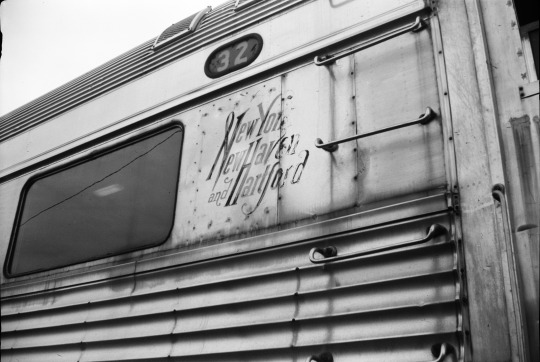
New York, New Haven, & Hartford Budd car at the Danbury Railway Museum. Photo taken by me on a 1920s No. 1 Pocket Kodak Junior.
#history#railroad#new york new haven & hartford#black and white photography#photography#trains#diesel#film#film photography#120 film#voca1ion
0 notes
Text

I made Eras Tour bracelets of all the times Taylor Swift references trains in her songs. The colours are inspired by different trains and railway liveries. Excessive details under the cut:
"You know that my train could take you home" from Willow. Inspired by Great Western Railway's Intercity Express Trains. It's the train I catch most often, it's my train!
"I knew you, stepping on the last train" from Cardigan. Inspired by the subway cars in New York City, which I think of as having blue seats but it seems yellow/orange is just as (or more?) common. Idk I've never been to New York, my whole knowledge of the subway comes from Broad City and pictures of dogs in Ikea bags.
"I jump from the train, I ride off alone" from The Archer. Inspired by ye olde American locomotives like the Union Pacific No. 119. This lyric evokes Wild West imagery for me and this type of engine is what my British brain thinks of as a "cowboy train".
"Rebekah rode up on the afternoon train" from The Last Great American Dynasty. Inspired by the steam locomotives used in the 1940s by the New York, New Haven, and Hartford Railroad, which is what Rebekah Harkness would have rode up on. Sadly I couldn't find a good colour image of one, so I leaned into it and chose a greyscale colour palette. As it happens the engines were almost certainly black anyway so it's fine.
"Silence, the train runs off its tracks" from Sad Beautiful Tragic. Inspired by my boy Thomas the Tank Engine. There are a lot of derailments on the Island of Sodor, the Fat Controller should probably have been sacked.
"Northbound I got carried away, as you boarded your train south" from I Look in People's Windows. Inspired by the London Underground map. I didn't have any brown beads so the Bakerloo line has been reassigned orange.
"We wait for trains that just aren't coming" from New Romantics. Inspired by the British Rail Class 195 trains created for Arriva Rail North, the network so incompetent that even the Tories had to re-nationalise it. Those trains just weren't coming.
"You took the night train for a reason" from Champagne Problems. Inspired by the British Rail Mark 5 coaches used on the Caledonian Sleeper Service.
"Some trains you can't catch again, you've gotta leave it as it was" from Tim McGraw - Acoustic Demo. This is a deep cut that I expect even a lot of Swifties wouldn't necessarily know, but I've always loved this lyric. It totally recontextualises the song and ironically is a much more adult sentiment than the lyrics of the final recording. Inspired by the livery of Anglia Railways, which are the trains of my childhood. Anglia Railways has been sold and rebranded several times since then, so they are quite literally the trains I can't catch again.
I imagine that Taylor Swift has not been on a train in many years, for obvious reasons. However I appreciate her continued use of train imagery in her songs and I hope she never ever stops :)
#is this the most autistic thing i've ever done?#idk but it's certainly up there#this is a long post that nobody will read#but i had fun putting it together so it's fine
47 notes
·
View notes
Text

New York, New Haven, and Hartford Railroad, Library of Congress
30 notes
·
View notes
Text

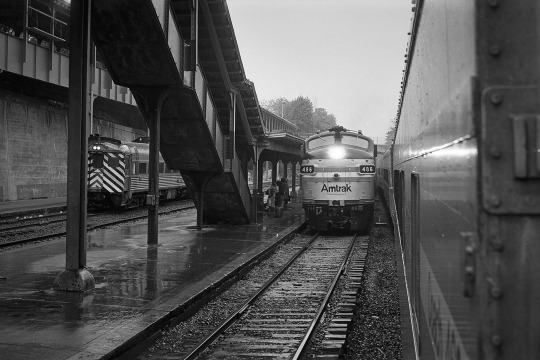
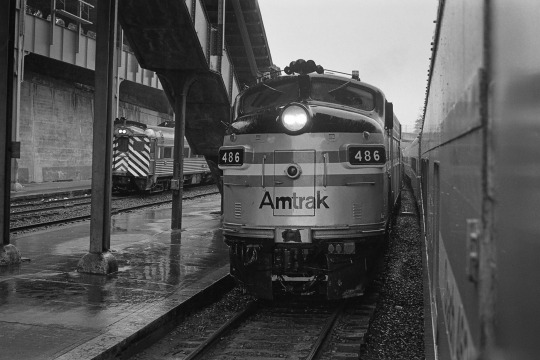
Changing Power at Poughkeepsie
While headed to NYC on the Lake Shore Limited, the train stopped at Poughkeepsie, New York, to change power; the rail line here was formerly the New York Central. Unfortunately, I don’t know what was on point of the train from Rochester (where I got on) to this spot, but from here on in to Grand Central Terminal, it would be an EMD FL9.
This locomotive, truly a unique model, was designed for use on the New York, New Haven and Hartford Railroad, specifically with GCT in mind. The locomotive could run as a normal diesel-electric does, but also use the electricity of a third-rail (either over or under the shoe) so as to not spew exhaust in the tunnels under Park Avenue as well as in the station itself. There were sixty of these produced; they remarkable for their B-A1A wheel configuration. After the New Haven was folded into the Penn Central, the use of this engine type expanded to the Hudson Valley line, as we see here.
Besides what was happening with my train, there is a Rail Diesel Car in the station; RDCs were built by the Budd Company of Philadelphia between 1949 and 1962. I believe these interesting self-propelled units were used for local service on the various Conrail commuter lines north of NYC; Metro North would take over these lines in 1983.
Three images by Richard Koenig; taken in May of 1981.
#metronorthrailroad#metronorth#amtrak#poughkeepsienewyork#poughkeepsieny#poughkeepsie#lakeshorelimited#filmphotography#grainisgood#rdc#fl9#hudsonvalley#hudsonriverline#newyorkcentral
45 notes
·
View notes
Text

#VoxPop The long-running radio program Vox Pop often focused on the American railroad and railroad workers.
On September 21, 1942, the program highlighted the New York, New Haven, and Hartford Railroad in a broadcast from the Cedar Hill Yard in New Haven, Connecticut. Here, interviewee Benjamin T. Savory shows host Parks Johnson the controls of a steam locomotive. Savory joined the New Haven Railroad in 1903. He retired in 1949 after a 50-year career in railroading. He passed away in Manchester, Connecticut, in 1954 at the age of 73.
Source: Parks Johnson collection on Vox Pop
10 notes
·
View notes
Note
Northeast corridor, what do you know of it either way I will tell you

The Northeast corridor is the longest electrified mainline in the western hemisphere it stretches from Washington DC to Boston the line is 457 miles long (735 kilometers) and is the busiest passenger rail corridor in north America it is Electrified with 3 different voltages 12kV 25Hz AC between DC union station and New Rochelle, 12.5kV 60Hz between New Rochelle and New Haven, and 25kV 60Hz between New haven and Boston South Station
These different sections all have different ownership and where Electrified at different points the New Rochelle to New Haven section is the oldest and was Electrified in 1910 by the New York New Haven & Hartford Railroad originally at 11kV 25Hz AC (however the voltage was boosted and was increased to grid frequency in the 1970s)
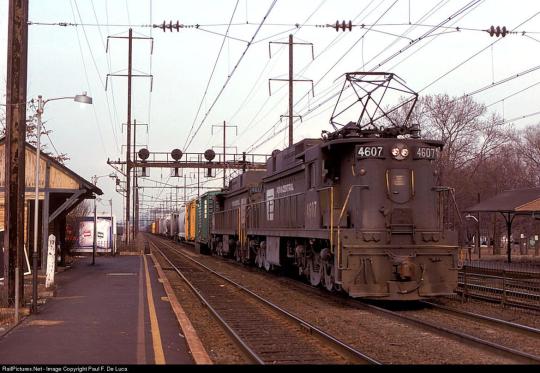
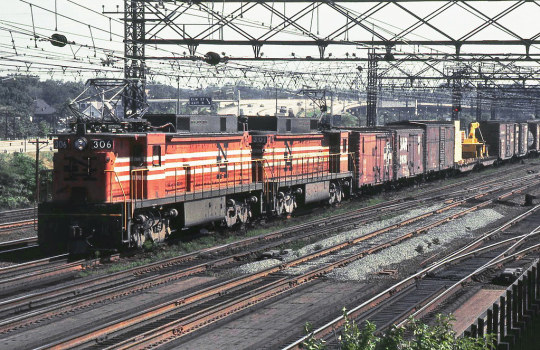
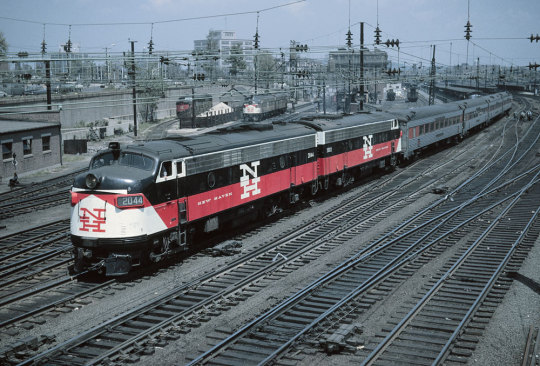
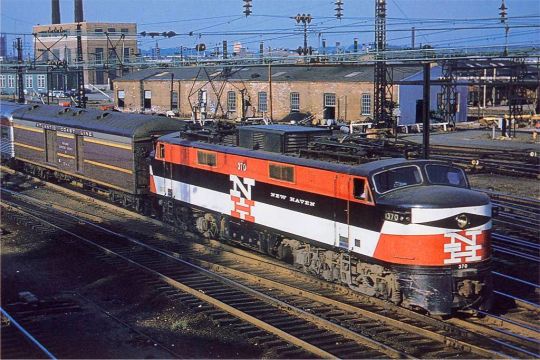
the line between DC union and New Rochelle was all owned by the Pennsylvania Railroad and was Electrified in Pieces starting 1912 with the Philadelphia to Paoli section and that Pennsy owned trackage was fully Electrified by 1934
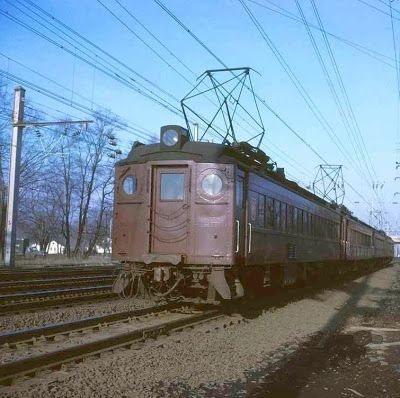
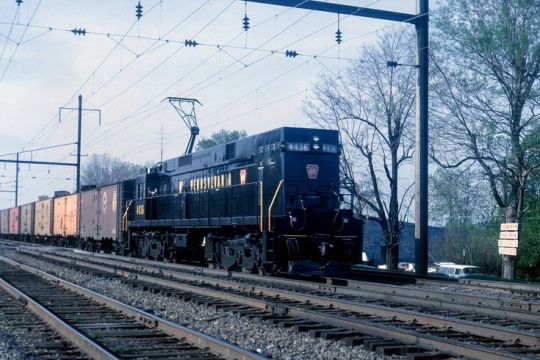
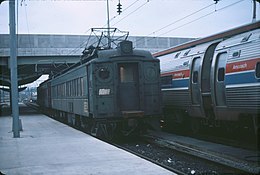
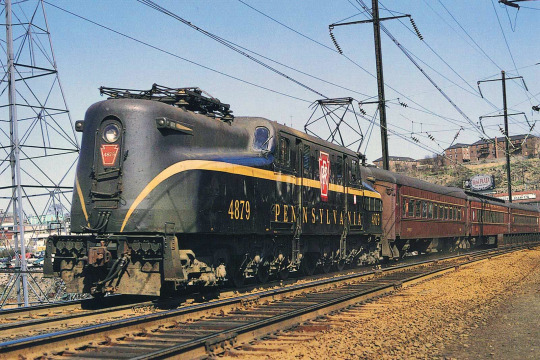
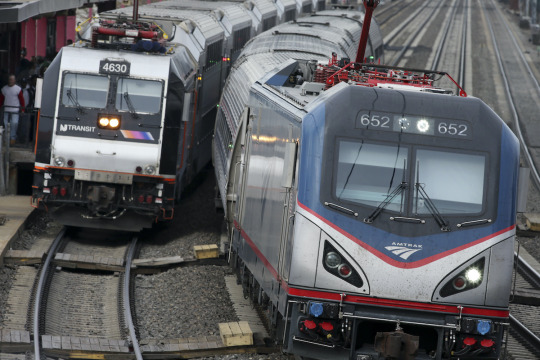
However after the collapse of the Frankenstein Penn Central (the Merger of the Pennsylvania Railroad with the New Haven and New York Central Railroad's) the line was taken over by state run passenger agencies like NJ Transit, and the two new federally owned railroad's Amtrak and Conrail
Conrail ran freight on the NEC using the E33 and E44 electric Locomotives until 1981 and Amtrak took over the Northeast Regional and commuter trains were taken over by SEPTA, NJ Transit, Metro North, The Long Island Railroad, CTrail, MARC, and MBTA
That has been an infodump about The Northeast corridor
i love the northeast corridor so i did know most of this but i appreciate train
12 notes
·
View notes
Note
Hello
Upon visiting your blog I can't help but notice the "free one way ticket to the lunar surface" post, as an astrophotographer I kindly request that they get sent to the far side of the moon as to not ruin my images.
Sincerely, A worried astrophotographer
PS: Uranus would also be a great place to send them because whilst it would take more ΔV it would also have the benefit of being really funny.
Unfortunately, the tracks we inherited from the New York, New Haven and Hartford Railroad only extend to the lunar surface and we do not have the finances to build any further.
8 notes
·
View notes
Video
CSO-3 Across The Connecticut por David Blazejewski
Por Flickr:
After wrapping up their work on the old Armory Branch in South Windsor CSO-3 is on their way back the the Connecticut Southern's operations base in the old New Haven Railroad Hartford yard to call it a day and start their weekend. They are seen here in this going away view looking through the long thru truss span crossing the wide Connecticut River. Still a key link to CSO's customers east of the Connecticut River in years past this was a far more important route as through trains traveled east beyond Manchester to Willimantic where they could continue due east to Plainfield and Providence on the historic Hartford, Providence and Fishkill route or northeast to Putnam, Blackstone and on to Boston via the Midland Division. In fact until 1955 a daily through Boston to Waterbury train crossed this very bridge. However by the thru Boston to Hartford route was severed by the flooding caused by Hurricane Diane that washed out the bridge in Putnam that was never replaced and in 1967 the thought route to Providence was partially abandoned to the east. The trackage east to Willimantic lingered a bit longer but was abandoned in the PC era rendering this line to nothing more than industrial branchline status. This particular bridge was supposedly built by the HP&F in 1873 and is a 1240 ft long five span Warren through truss. Owned successively by the New York and New England, New Haven, Penn Central and Conrail it became CSO property in 1996 when the newly formed Railtex shortline purchased the Hartford cluster from Conrail. Bringing up the rear of the little two car train is NECR 3855 a GP38 blt. Aug. 1969 as GMO 718 and now one of only four blue and gold painted NECR units left in service anywhere, albeit not on her adopted 'home rails.' East Hartford, Connecticut Friday February 10, 2023
2 notes
·
View notes
Text
Transit Talk Thursday

Transit Talk Thursday: Okie dokie, this was not a thread I was intending on making, but unfortunately my hand was forced. Half as Interesting has always been to me the pinnacle of content mill garbage, but this has got to be the absolute pinnacle of content mill garbage with how it basically gets every single important detail wrong in some capacity. It's so bad that I couldn’t just stand here and watch from the audience. I had to get involved in some way, and this is the best way that I could think of. Let’s dissect this absolute travesty of a video together, and maybe we’ll learn a few things along the way.


First of all, the map he shows of the Northeast Corridor (first image) is inaccurate*. It highlights the Keystone Corridor, a portion of the Empire Corridor, and the Springfield Corridor. This I take a bit of issue of because most foamers agree that the Keystone Corridor from Philadelphia to Harrisburg and Pittsburgh, the small snub of the Empire Corridor and the Springfield Corridor are considered separate corridors, but the Northeast Corridor Commission does consider those to be a part of the NEC, so this is fine, if not a tiny bit annoying. Though based on how it looks, it's likely Ben Doyle (the writer of the video) just took the map of the NEC and its adjacent corridors off of Wikipedia (second image) and used it in the video. This one is based off of a technicality so I can give Ben the benefit of the doubt this time. I wish I could do the same for the next ones though!

So the next thing I take issue with is the point about electrification systems. Sam says that the ex-PRR system running on 25Hz is apparently a problem because since it runs on a different frequency, it's impossible to upgrade without tearing it all down. So to explain this one, the Northeast Corridor has three separate electrification systems powering it. The first is the Southend Electrification (see above), running on 11kV 25Hz AC electrical power, built by the Pennsylvania Railroad, and the one which has the problems. The next is the 12.5kV 60Hz AC system, which is a remnant of the New York, New Haven, and Hartford Railroad. This one powers the NEC from New York Penn Station to New Haven Union Station. The last is the Northend Electrification, running on 25kV 60Hz AC power, which was done by Amtrak in the 1990s. The Pennsylvania Railroad built their system on 25Hz because it was a fairly prevalent system for industrial use, and this was before 60Hz became the standard for North America. With that being said, Sam's point about it being impossible to upgrade due to it requiring special equipment and infrastructure is just wrong. Amtrak has upgraded this system before (you'll see an example later), so the notion of it being a problem because its 25Hz while the other systems are 60Hz, and as a result, using special equipment is just wrong. Second of all, even if we’re coming from the perspective of “Oh but what about the trains you run on the system, that’s gotta be the real problem”, that’s…not a problem at all. Rolling stock that can work for all three electrical systems of the NEC are available and we still roster them even today, like Amtrak’s current ACS-64s. Ben even wrote that its impossible to tear it all down and start from scratch, so that's what Amtrak has decided not to do. Amtrak instead just works around it, and whaddya know, it works just fine.

Next thing is the detail Amtrak apparently absorbed PRR in 1975. This statement is what made me do this thread. It is the pinnacle of how Ben doesn’t know what the hell he’s talking about when it comes to trains.
For the uninitiated, the Pennsylvania Railroad was not absorbed into Amtrak in 1975, because it didn’t even exist in 1975! What Ben got wrong here was Amtrak absorbed the passenger operations of Penn Central, the successor of the Pennsylvania Railroad, created from a merger of PRR, the New York Central, and the New Haven Railroad, while Conrail took over the freight side. The reason why Amtrak and Conrail even came to existence is because the Penn Central merger was so horrible it created one of the largest bankruptcies in United States history, and it forced the Nixon Administration to create Conrail and Amtrak to plug the gaping hole in the United States’ transportation network. Every single foamer worth their weight knows this story, to get this wrong in a video meant to "inform" (hard air quotes) people is an indication of extreme carelessness.
So the explanation of constant-tension catenary is “fine”, apart from how Sam didn’t say what it actually was by its correct name, but what I take issue with here is the lack of an explanation as to why the ex-PRR catenary is so bad, and why these issues haven’t been seen on other segments of the NEC.
So Alan Fisher has a great thread explaining why on his Twitter, but because not everyone has Twitter (good for you), I’ll explain it here as well.


The reason why Amtrak and New Jersey Transit were experiencing outages due to downed wires is because a majority of the ex-PRR wires are simply fixed into place on the catenary poles (see above). This is an issue because when the wire heats up, it sags, which makes it so a train’s pantograph can strike it and bring the wire down. By comparison, the section between New Haven, CT and Boston, MA done in the 90s (Known as the Northend Electrification, see below) has constant-tension catenary, which means the wire is kept tight with calibrated weights. This is good because it means no matter how much the wire expands, the weights can pull the wire tight. Unfortunately, a majority of the ex-PRR system lacks constant-tension, so whenever the temperature heats up (like it did in July), the wires will sag, and the chance for the system to be downed due to a wire being taken down is elevated.

Now the final thing I want to go over is Sam saying that Amtrak did get money to upgrade a section of the NEC between Trenton and New Brunswick, NJ, but they only did 7 miles of the section before “calling it a day”. First of all, the notion that Amtrak only did 7 miles of the Trenton - New Brunswick section is very wrong. Amtrak has an OIG report which details that the entire section has constant-tension now, which is why the Acela is able to hit a top speed of 150mph there. Second of all, Sam fails to mention the actual reason why they only did 7 miles at first. The actual reason why is because due to a clusterfuck regarding mismanagement of federal funds, there was only enough money to do 7 miles of the entire corridor. There’s an OIG report which mentions it here. Saying that they did just 7 miles and “called it a day” with no elaboration is indicative of, once again, extreme carelessness and laziness. But then again, I probably shouldn’t expect anything more from a content mill.
BONUS: If you're wondering why Amtrak did this 20 mile stretch first, its due to Amtrak anticipating their new Acela trainsets, coming sometime in Q4 of this year. [Source]
So, conclusion?
This video was insanely painful to watch for me. I have always disliked HAI for its writing style, but now the channel has decided to just publish blatant lies for their mindless subscribers to gobble up like vultures. This kind of stuff will keep happening so long as so many people are misinformed and uneducated about trains. But it doesn't have to be this way. This is why I'm making this post. Not because I want to cash in on some "Internet clout" or something stupid like that. Rather, I'm doing this to spread the truth, to counter this 8 minute package of lies put out by a channel which has much higher production values than what I could muster. I may not be able to edit well, voice scripts that well, make eye-catching motion graphics, or make interesting graphics. But what I am able to do is talk about trains and transit in an informative, educational, and most importantly, accurate way. And at the end of the day, that's all that I care about.
1 note
·
View note
Text


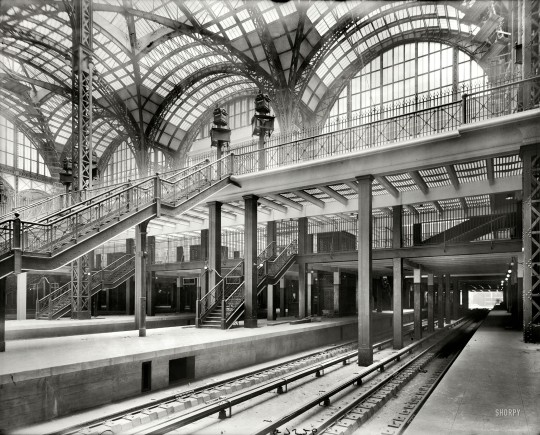




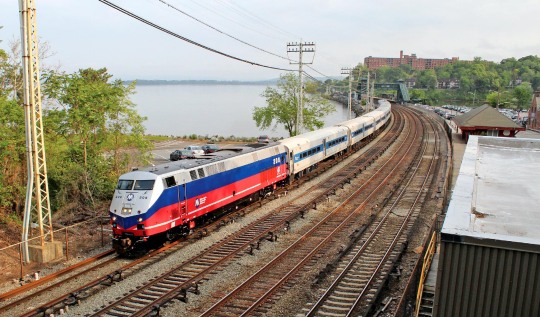
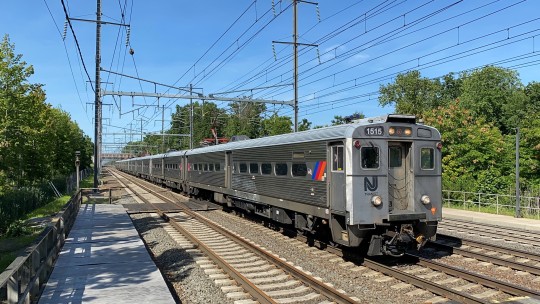

#trainposting#amtrak#electric traction#new york penn#penn station#pennsylvania railroad#new haven#new York new Haven and Hartford Railroad#new york central#mta metro north#metro north railroad#nj transit
4 notes
·
View notes
Photo

Day 22: New Haven I-5
Info from Locomotive Wiki:
With the increase of passenger traffic on the New Haven's Shore Line requiring trains of fourteen to sixteen cars, the capacity of the I-4 Pacifics which had been used for twenty years was severely taxed. As a result of tests with two of these engines with a twelve-car train operating over the 156.8 miles between New Haven and Boston, this new design was worked out. Much research went into these studies, which included consideration of the 0.6 to 0.7 per cent ruling grade near Sharon Heights outside of Boston, and the eventual plans called for a locomotive which could maintain a 60-mile speed over these grades with a twelve-car 830-ton train.
Ten of these Class I-5 engines were delivered in 1937, being partly streamlined but with maintenance accessibility in mind. They have been satisfactory in every respect since they went into service and will probably remain the last steam locomotives to be purchased by the New York, New Haven, And Hartford Railroad.
The first of the class, #1400, was built by the Baldwin Locomotive Works in 1937. The last ones were withdrawn in 1951 with a life of only 14 years - a considerable waste of resources. Had they survived a few years longer, they would have undoubtedly became candidates for preservation.
models and route by: Pweiser, Auran, and Download Station
#New York New Haven & Hartford Railroad#New Haven#New Haven Railroad#NH#New Haven I-5#NH I-5#I-5#Steam Locomotive#Trains#Trainz Simulator#Christmas#Advent Calendar#Christmas 2022 🎄🎅🎁
0 notes
Text
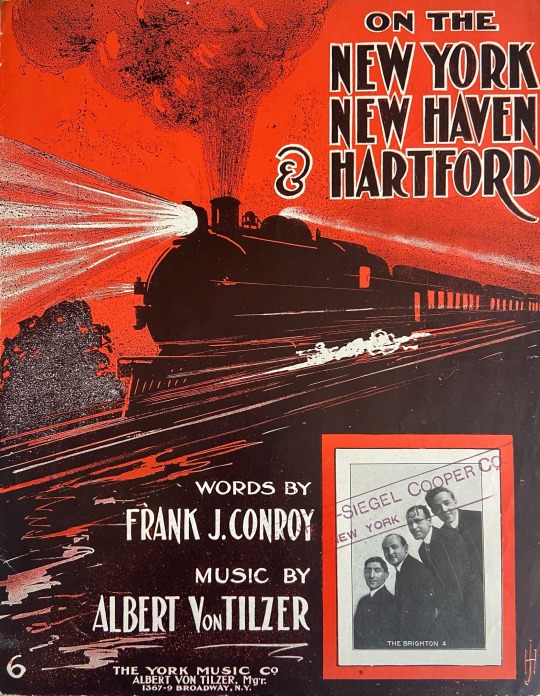
#new york new haven & hartford#nynh&h#history#railroad#1910s art#1910s#sheet music#steam locomotive#voca1ion
1 note
·
View note
Text
Remarks & Notes
Canaan Reborn. At the junction of what was the New York, New Haven and Hartford Railroad and the Central of New England is the Canaan Union Depot. "Union" because the CNE was a separate railroad until it was purchased by NY, NH,& H in 1927. First passenger abandonment, then freight under Penn Central. The Housatonic Railroad appeared on the scene in 1980 to start freight service again, and ultimately the station was restored and rebuilt, and is today the home of the Great Falls Brewing Company and the New England Accordion Connection & Museum Company.
0 notes
Photo

Westchester Avenue Station in The Bronx, New York
The Westchester Avenue station was constructed in 1908 to expand commuter rail service into the Bronx, Westchester County, and Connecticut by the New York, New Haven, and Hartford Railroad (NY, NH & H). Architect Cass Gilbert, who had recently completed the lauded U.S. Custom House in Lower Manhattan, was tasked with designing 12 stations, though not all of the proposed stations were built. The Westchester Avenue station consisted of three sections: a tall, central entry hall, a shorter waiting room suspended over the tracks to the east, and a small west porch. The entrance is ornamented with glazed, polychrome terra cotta. In his later 1910 design of the Woolworth Building, Gilbert again utilized terra cotta detailing. Several factors hampered the success of commuter service on this line: the amount of debt incurred during the expansion, a terminus in the Bronx not Manhattan, and later competition with less expensive subway service. The NY, NH, and H discontinued service to local stations in 1931 although a subsidiary, the New York, Westchester, and Boston rail lines, continued to make scheduled stops. Both railroads eventually declared bankruptcy and on December 31, 1937, the last train stopped at Westchester Avenue. Amtrak now owns the property, which operates a portion of the Northeast Corridor in the right-of-way. Amtrak lists the asset as a "structure in need of demolition." The trackside platforms and stairs have been removed. The west porch was demolished, and replaced by an exit from the Sheridan Expressway. Graffiti removal has bleached the colors from the terra cotta on the lower part of the entry hall, which is not to say that the building is free of graffiti. Ivy often covers much of the structure. The Westchester Avenue station is neither listed on the National Register of Historic Places nor is it a New York City landmark, though local community activists hope to restore and repurpose the building.
https://www.atlasobscura.com/places/westchester-avenue-station
0 notes